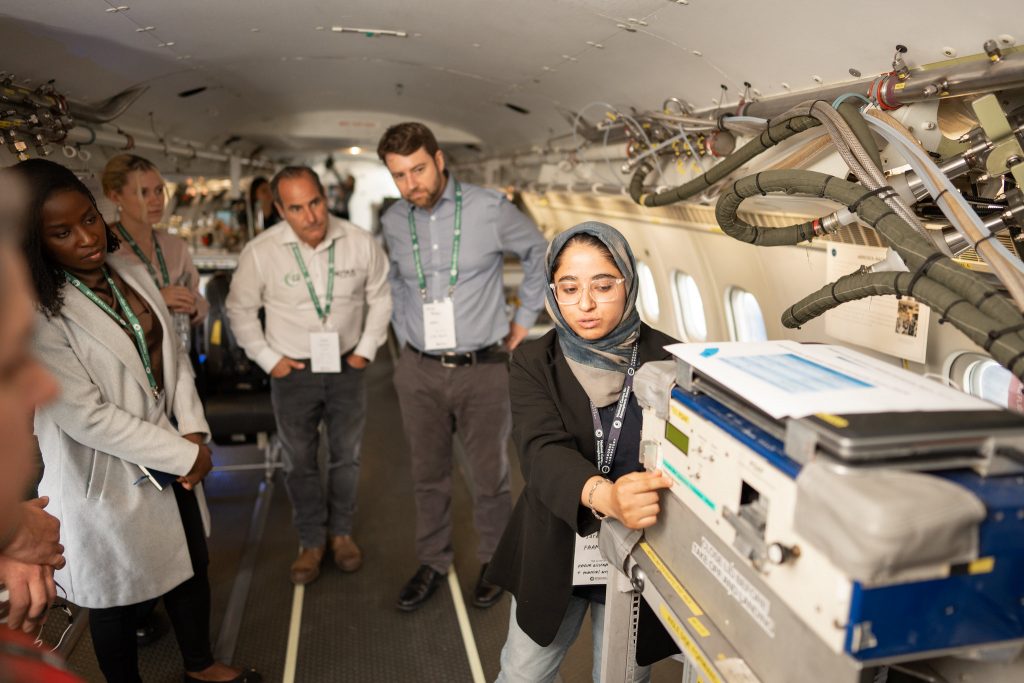
This summer, join the FAAM Airborne Laboratory in celebrating 20 years of science flying by visiting their specially adapted BAE-146 aircraft. As part of the Pushing the Boundaries in Air and Space theme, our atmospheric research aircraft will be on static display at the Royal International Air Tattoo, 19-21 July 2024, in the Cotswolds. If you’re unable to attend, a virtual 3D tour of our aircraft will be launching online soon!
From climate change and air pollution to weather and environmental disaster response, discover how the FAAM Airborne Laboratory’s atmospheric research aircraft has completed 1400 science flights across 30 countries, 5 continents, and supported over 120 UK and international science projects.
Capable of flying with up to 4 tonnes of scientific instruments, as low as 50 feet over the sea and 35,000 feet high in the atmosphere, flights can last between one and six hours, covering up to 2000 nautical miles.
In the past year, the research aircraft took to the skies to monitor methane emissions from Scottish wetlands, improve summer storm predictions in southern England, detect changes in the North Atlantic marine environment, and test the use of blended sustainable aviation fuel.
The aircraft was the 1981 prototype BAE 146-100 (original registration G-SSSH) and BAE 146-300 variant after modification in 1984. Learn about its prototype features – like the jumpseat – that made it ideal for conversion to an airborne lab in 2001 – including a reinforced fuselage, upgraded cabin pressure capabilities, a modified fuel system, and a switch to Honeywell LF507-1H turbofan engines.
Find out how the FAAM Airborne Laboratory is strapping in for the next 20 years, with exciting upgrades to keep the research facility flying until 2040 and beyond.
